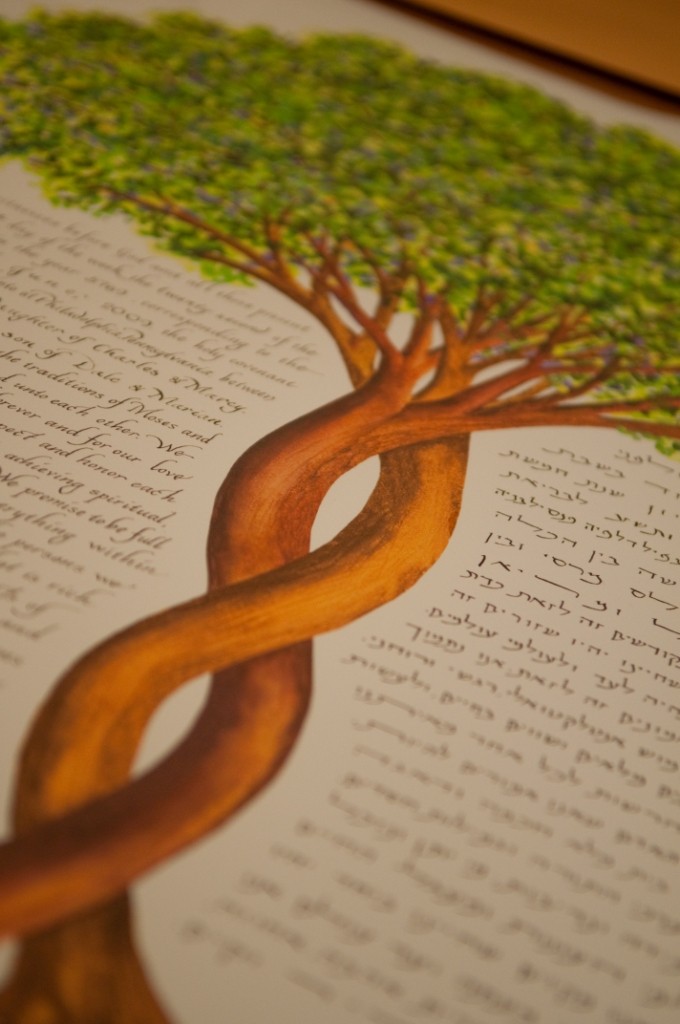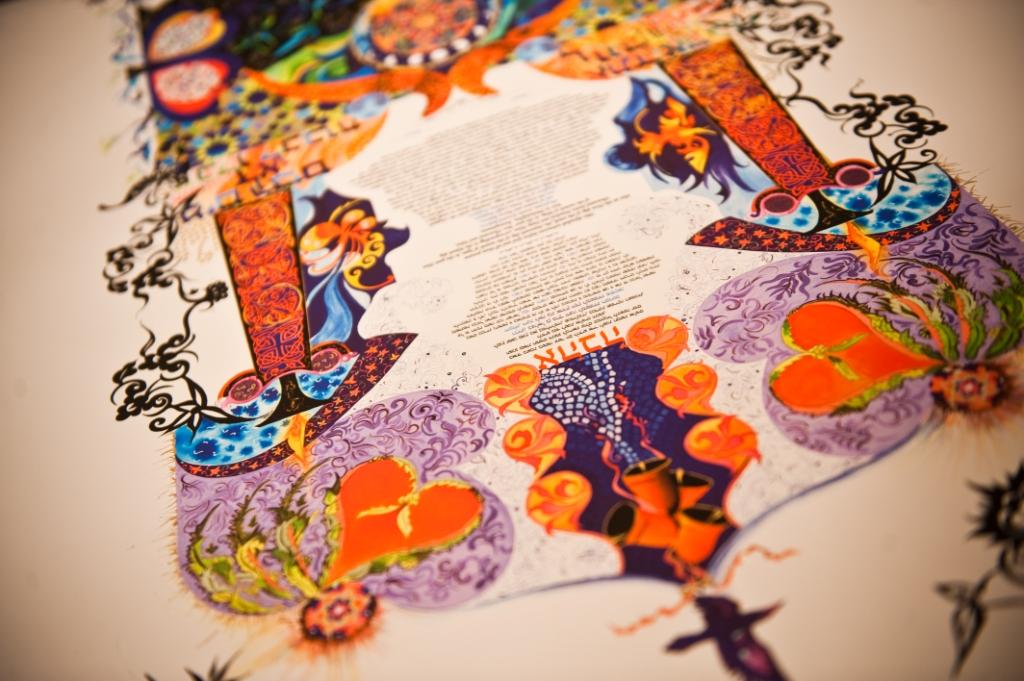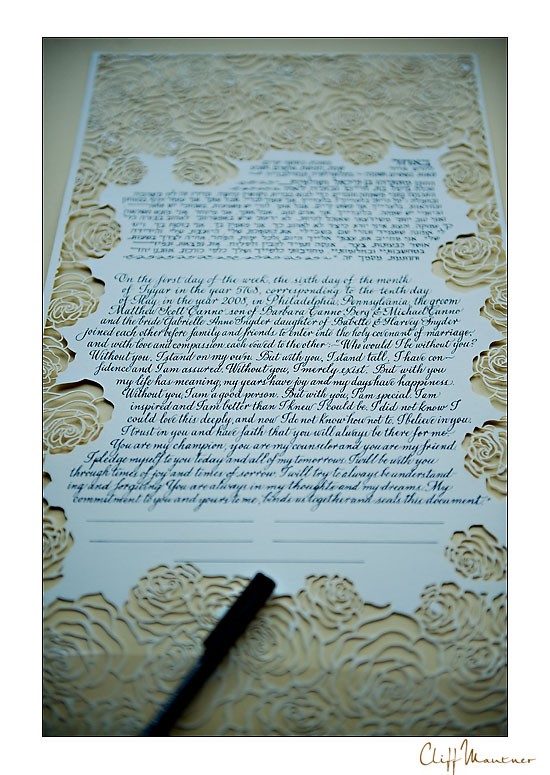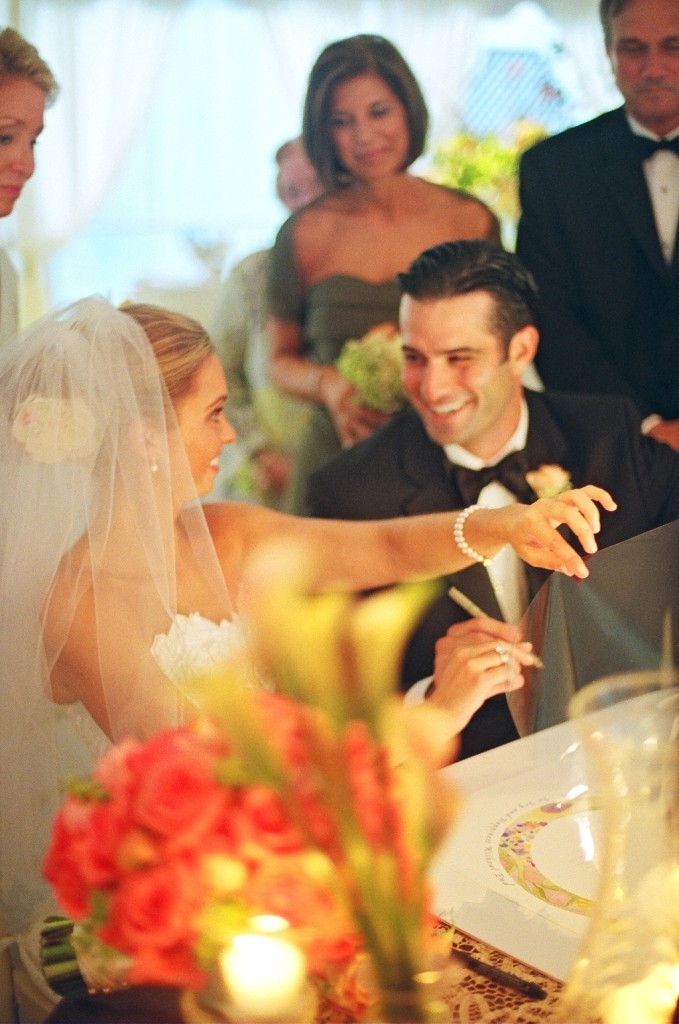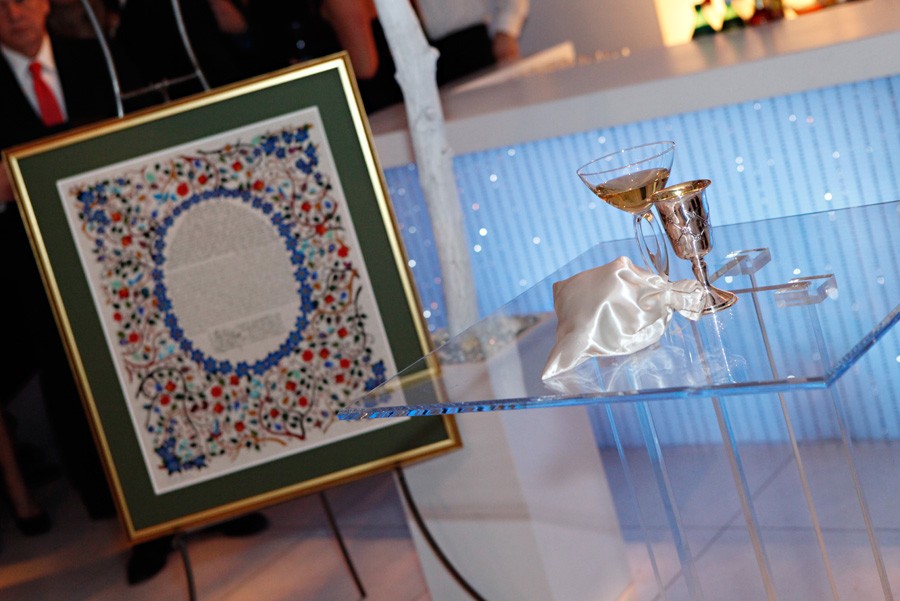Ketubah (pronounced “keh-TOO-buh”) is a traditional Hebrew marriage covenant dating back to the Talmudic Era. According to the Jewish faith, marriage is a contractual agreement between two people with legal rights and obligations set forth in a marriage contract or Ketubah. Written in Hebrew and Aramaic, many consider the Ketubah to be one of the original forms of a prenuptial agreement. According to Jewish law “A man may not live with his wife even one single hour without a Ketubah in place.”
[Photo: Phil Kramer]
[Photo: Cliff Mautner]
Traditionally, the purpose of the Ketubah is to protect the woman’s rights during the marriage in case she is divorced or widowed. Looking back through history, the Ketubah marked a giant leap forward in the protection of the rights of women. A woman was not to be taken for granted or cast aside without serious repercussion to the man in the community in which he lived. For instance, it is technically forbidden for Jewish couples to live together without a Ketubah because the woman has no claim to property should the man abandon her. With a Ketubah in hand she can claim property and protection from their union. If the Ketubah is lost or misplaced, a new one must be written and re-witnessed immediately for the same reason.
But it’s not all about protection and property rights. Although Jewish law specifies the wording of the Ketubah, there aren’t any specific rules as to how the document should look. As a result, over the centuries couples have chosen to commission a handmade and personalized Ketubah to express their faith, love, commitment and marriage vows. Many graphic designers, painters and calligraphers worldwide are available to design a meaningful Ketubah that best reflects the couple’s personal style. Two of our favorites are the traditionalist papercutter Karen Shain Schloss and modern graphic designer Jennifer Raichman. Modernization and practicality have also seen the advent of more English language used in place of Aramaic and Hebrew. Regarding the Ketubah more than ever as an art form, couples prominently display their Ketubah in their homes as a keepsake and daily reminder of the promises made to each other.
[Photo: Liz Banfield]
Other than the symbolism and artistic design, the Ketubah logistically plays an important role in the wedding day. Normally, the bride and groom, their families, the bridal party and two witnesses gather together just prior to the wedding ceremony for a Ketubah signing. For many families, this is the most important ritual of the wedding day because when the document is signed and blessed by the Rabbi the marriage has “come to terms.” Once the Rabbi has blessed the contract he asks the bride and groom to sign the Ketubah followed by their two witnesses. Generally, it is a great honor to be asked to witness the signing of a Ketubah and therefore a task reserved for relatives or close friends. After the signing, the contract is quickly taken to the ceremony and placed on an easel located under the Chupah, or wedding canopy. Portions of the Ketubah are then read aloud during the ceremony to publicly share the promises and terms as well as to declare their commitment and love. After the ceremony, some couples, but not all, choose to have their Ketubah placed in a safe but public location in the reception space to allow their guests to admire the document.
[Photo: Marie Labbancz]While the Ketubah has its roots in Jewish tradition, its symbolism has been enthusiastically embraced by couples from all different cultures and religions. Believe it or not, Ketubahs are not just for newlyweds anymore! In some families, they are designed and given as anniversary gifts to parents celebrating a milestone anniversary. What a powerful document to stand the test of time and still hold such tremendous meaning to so many.

